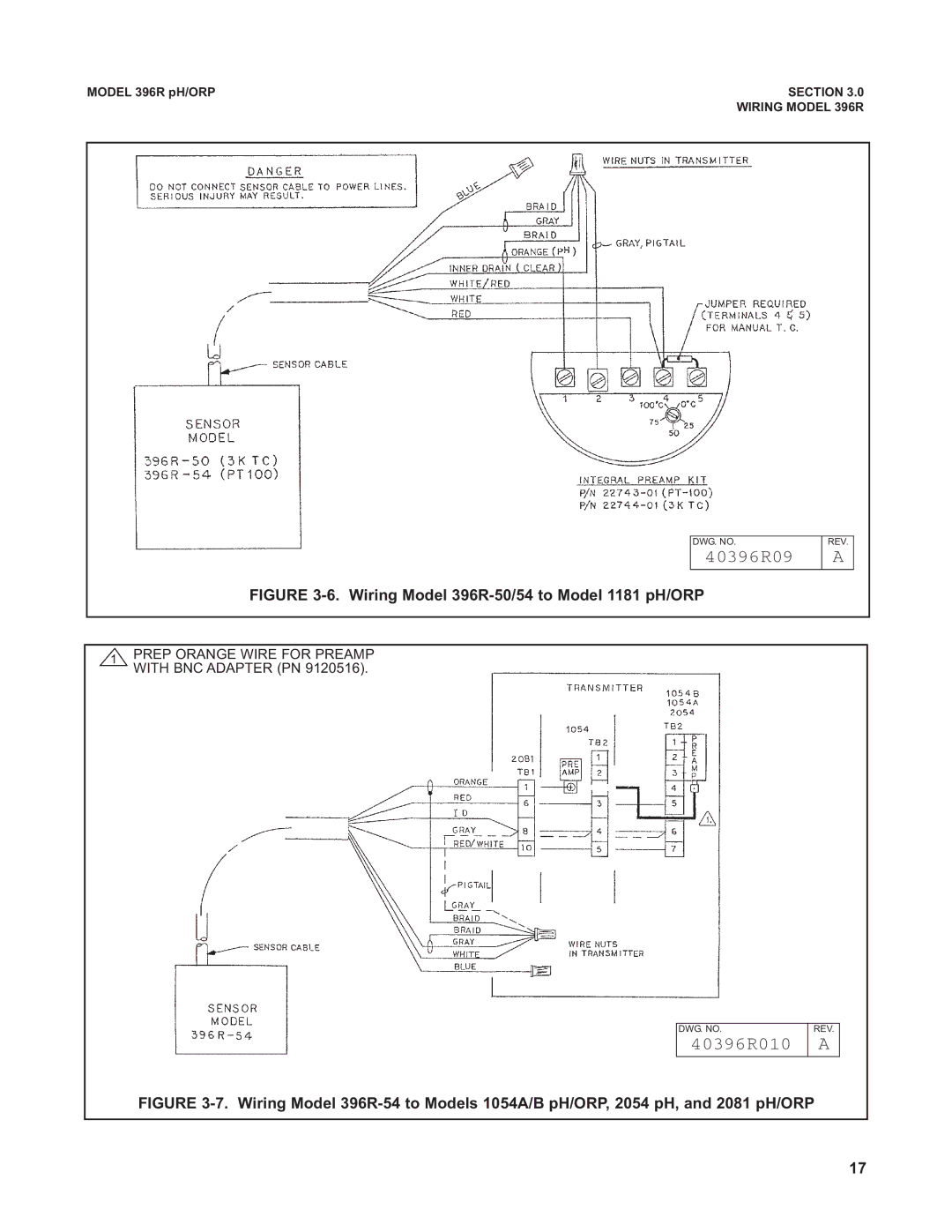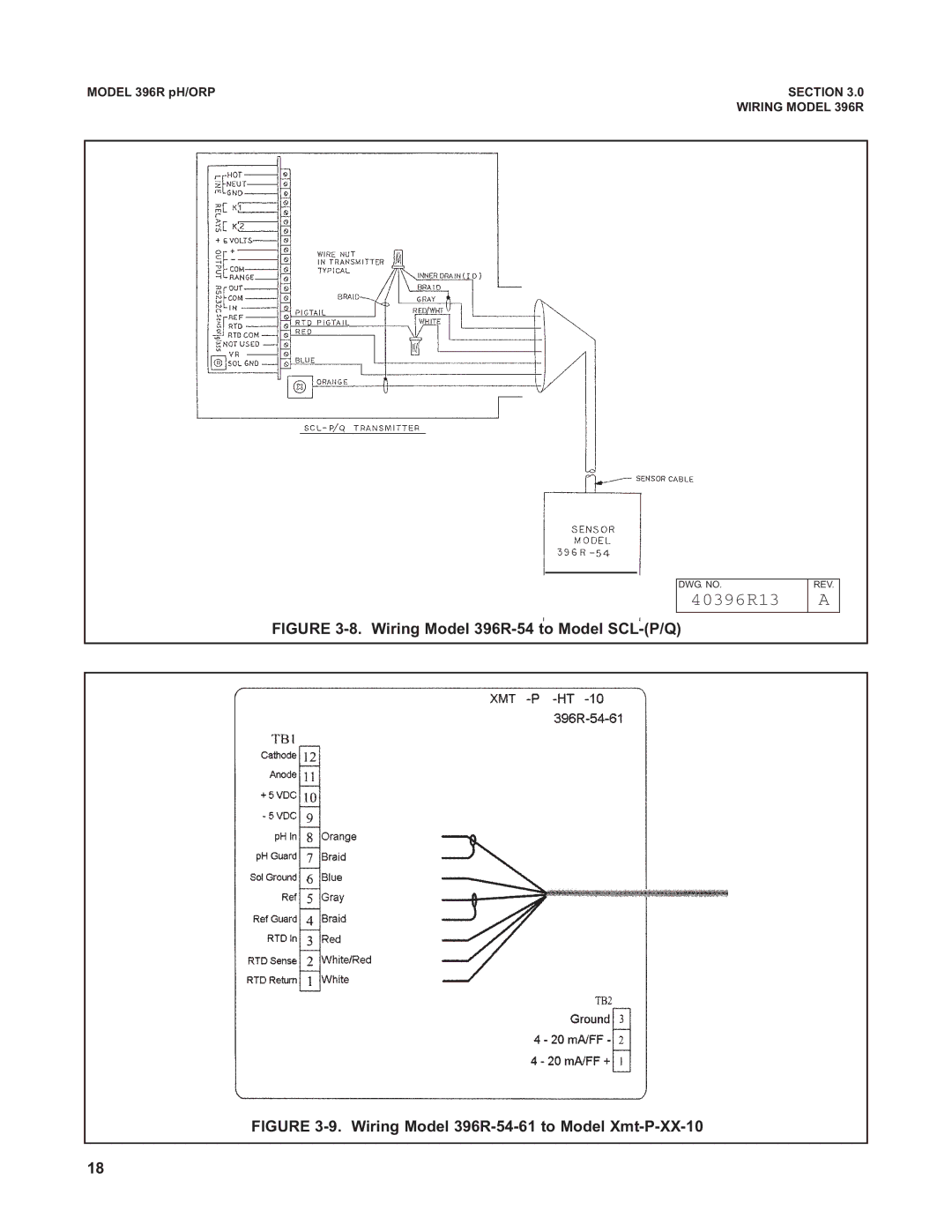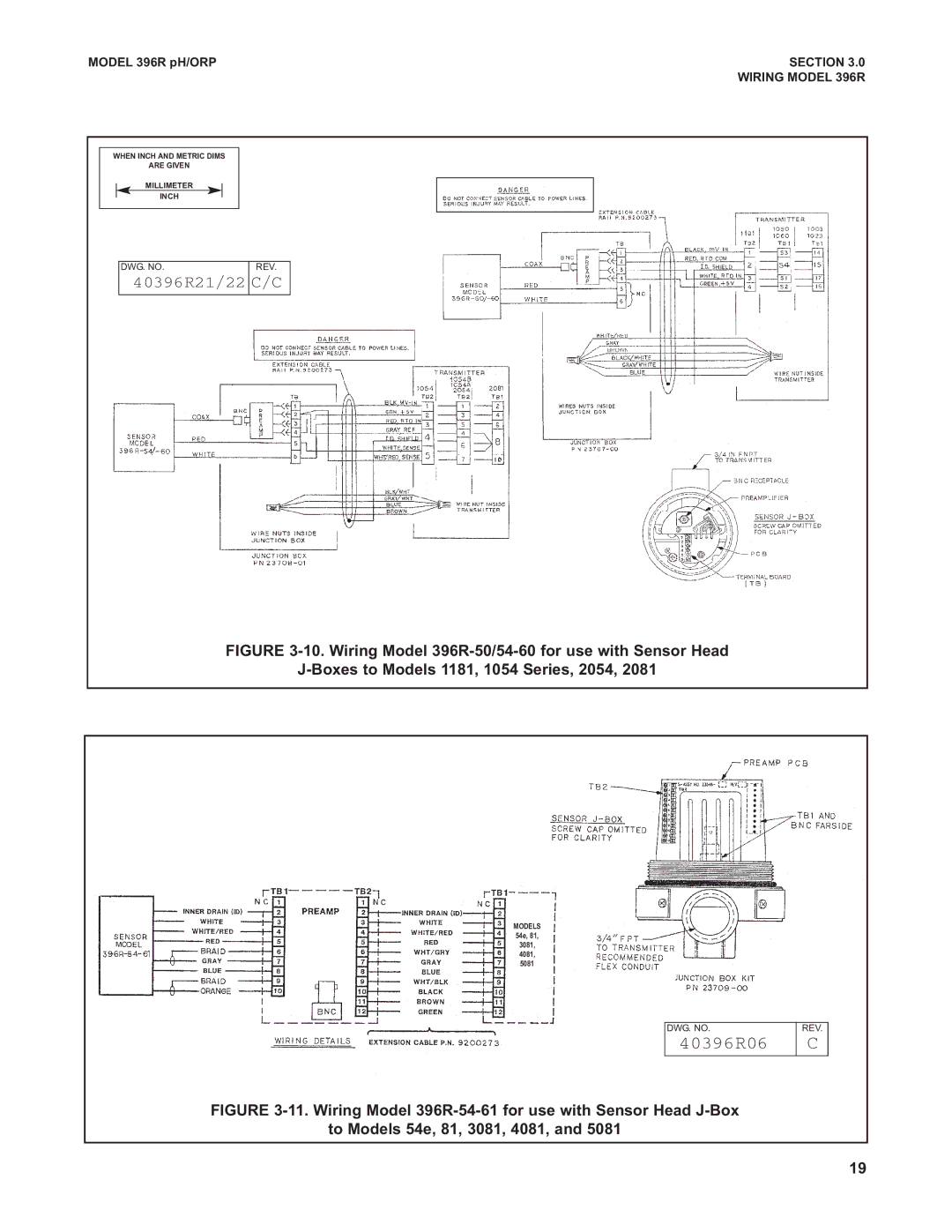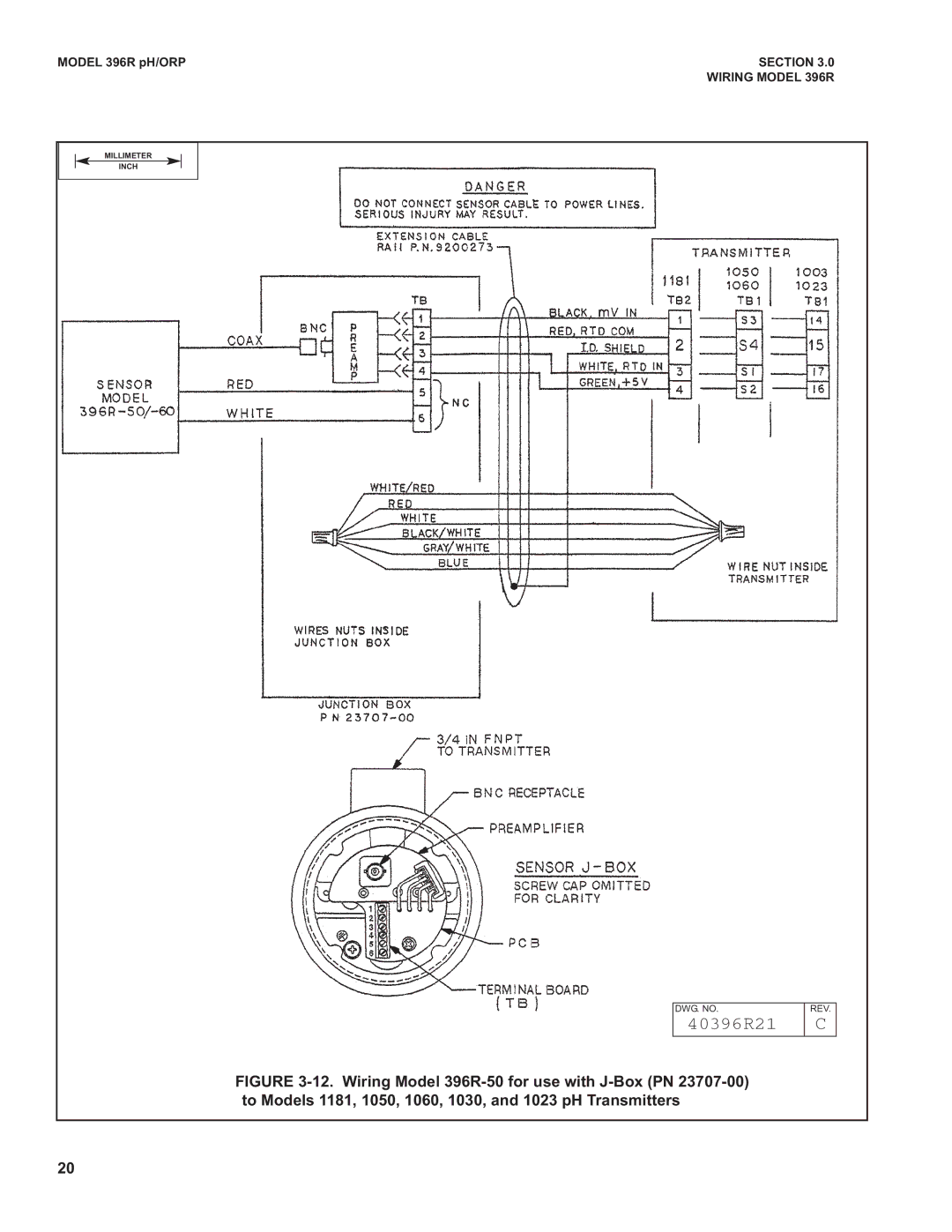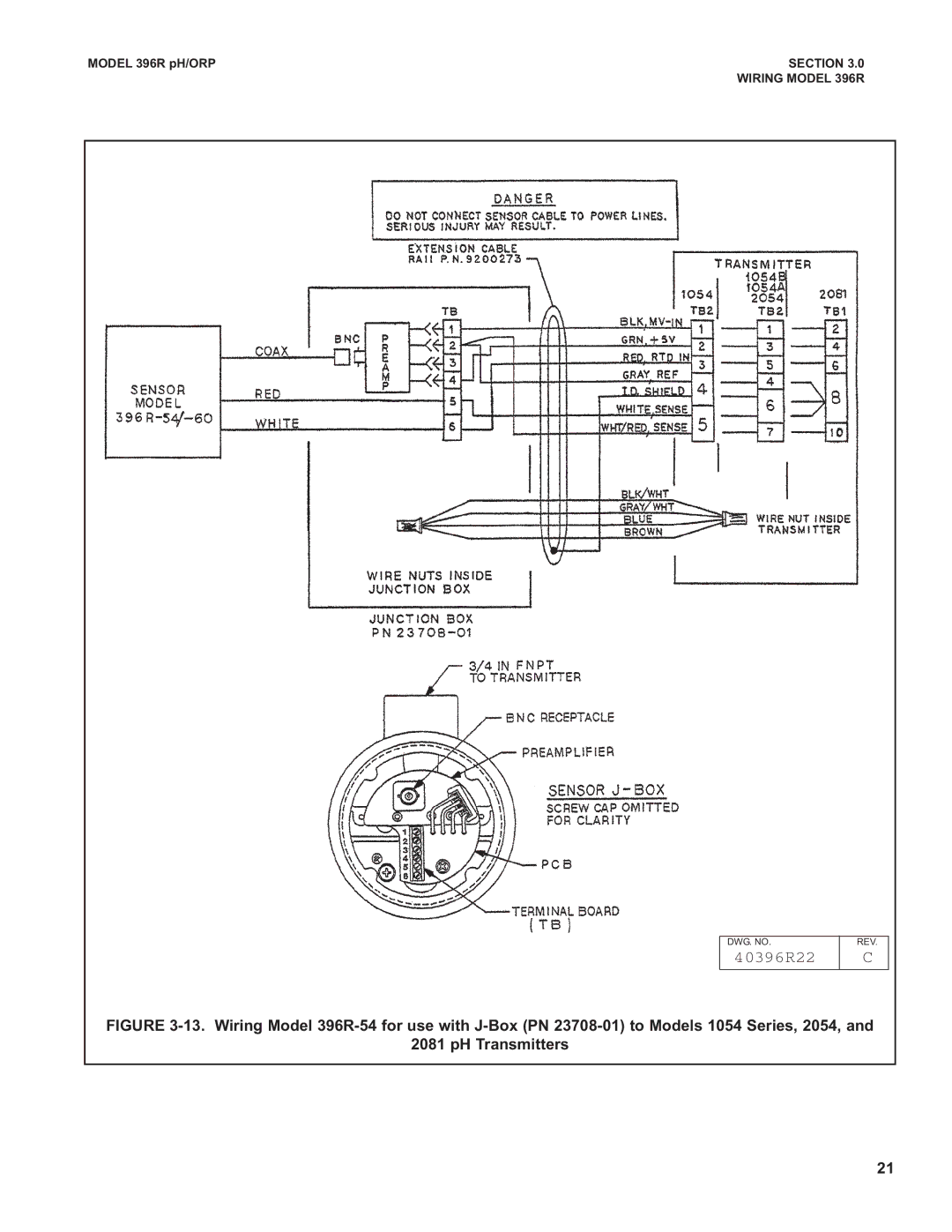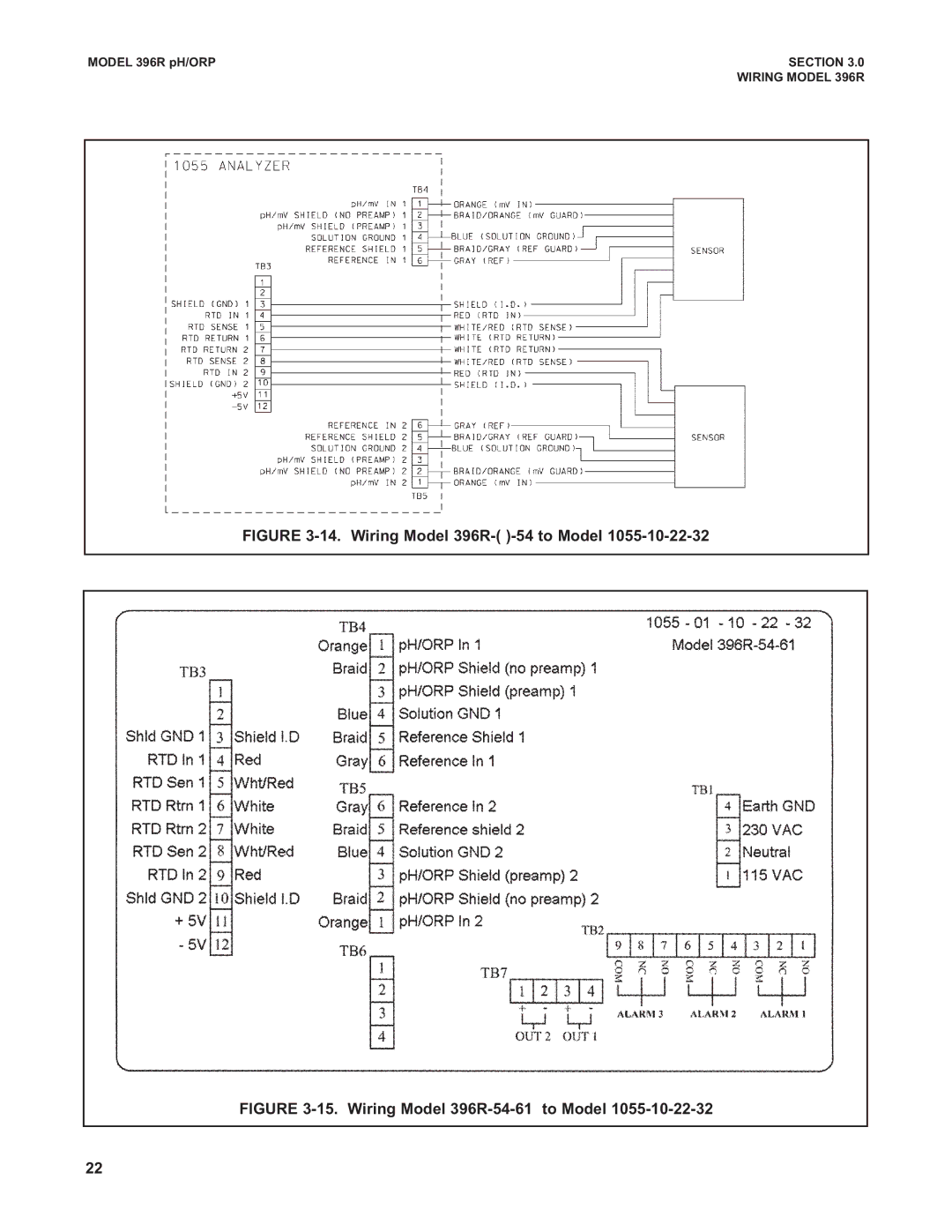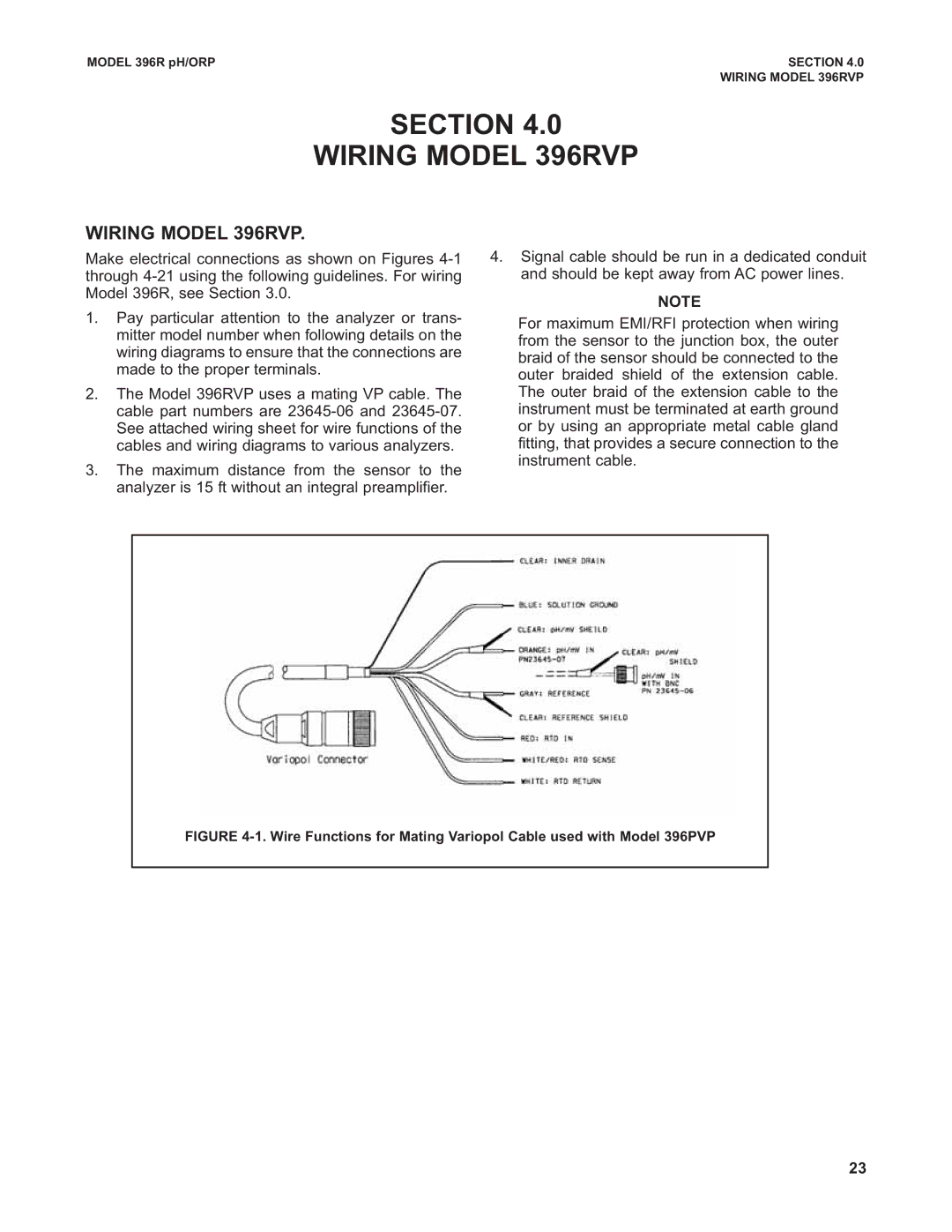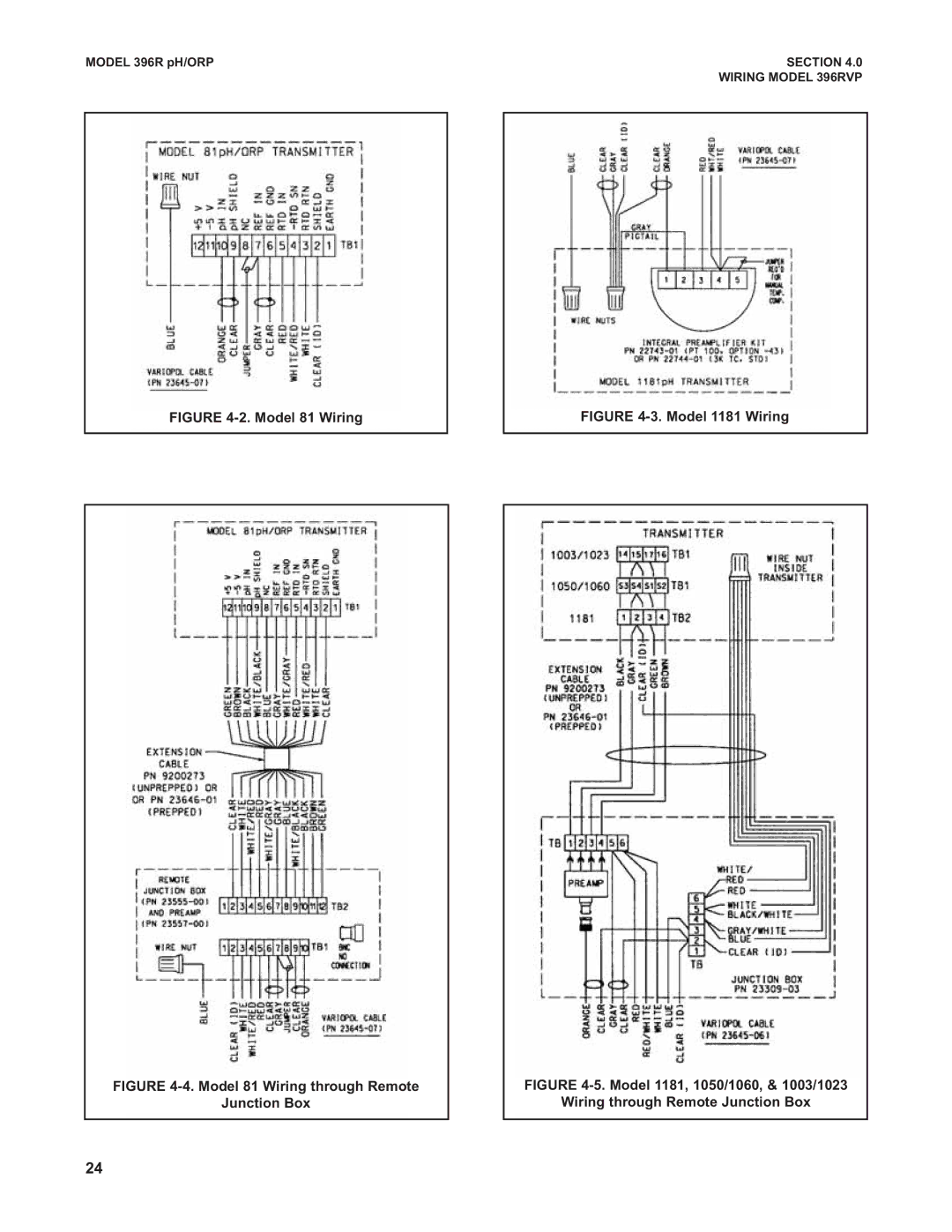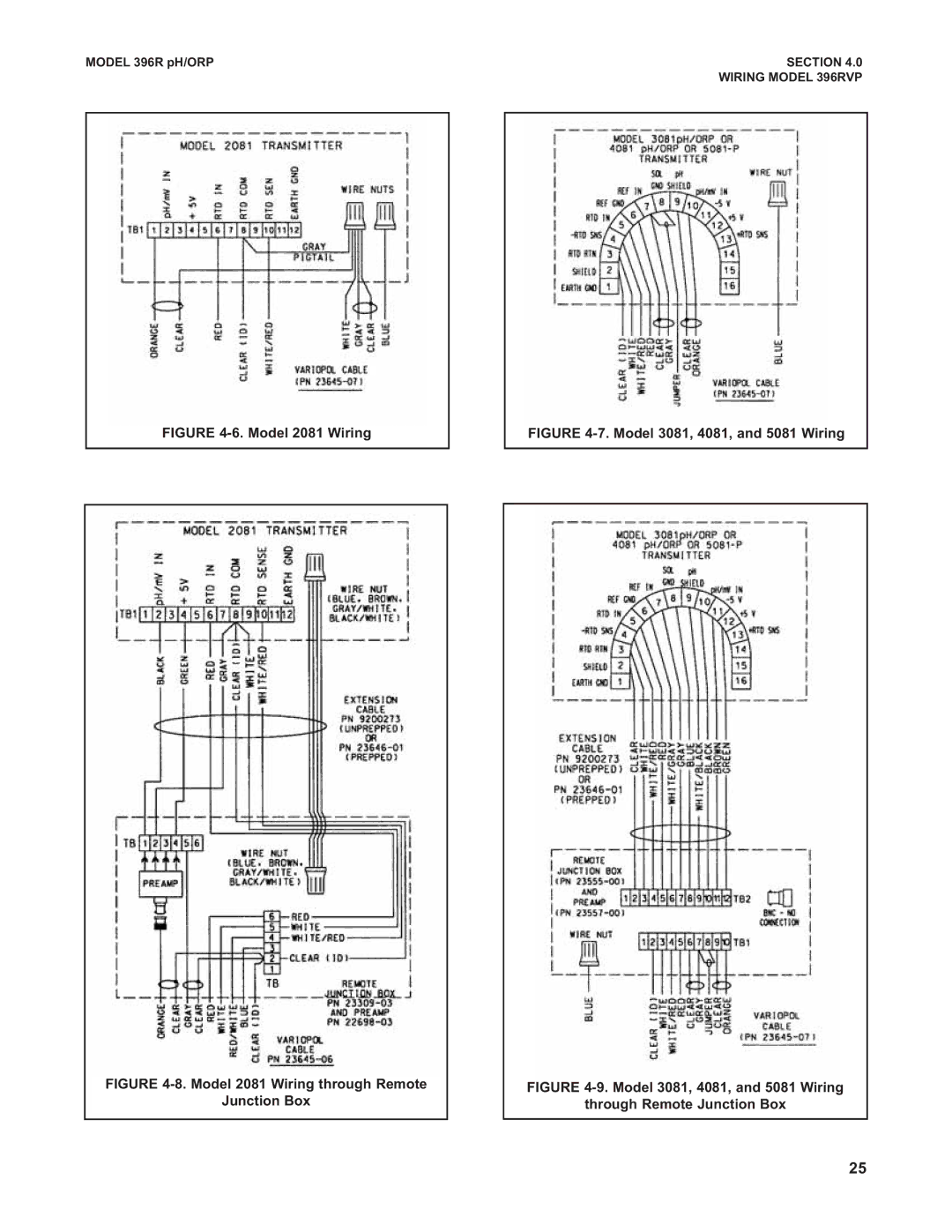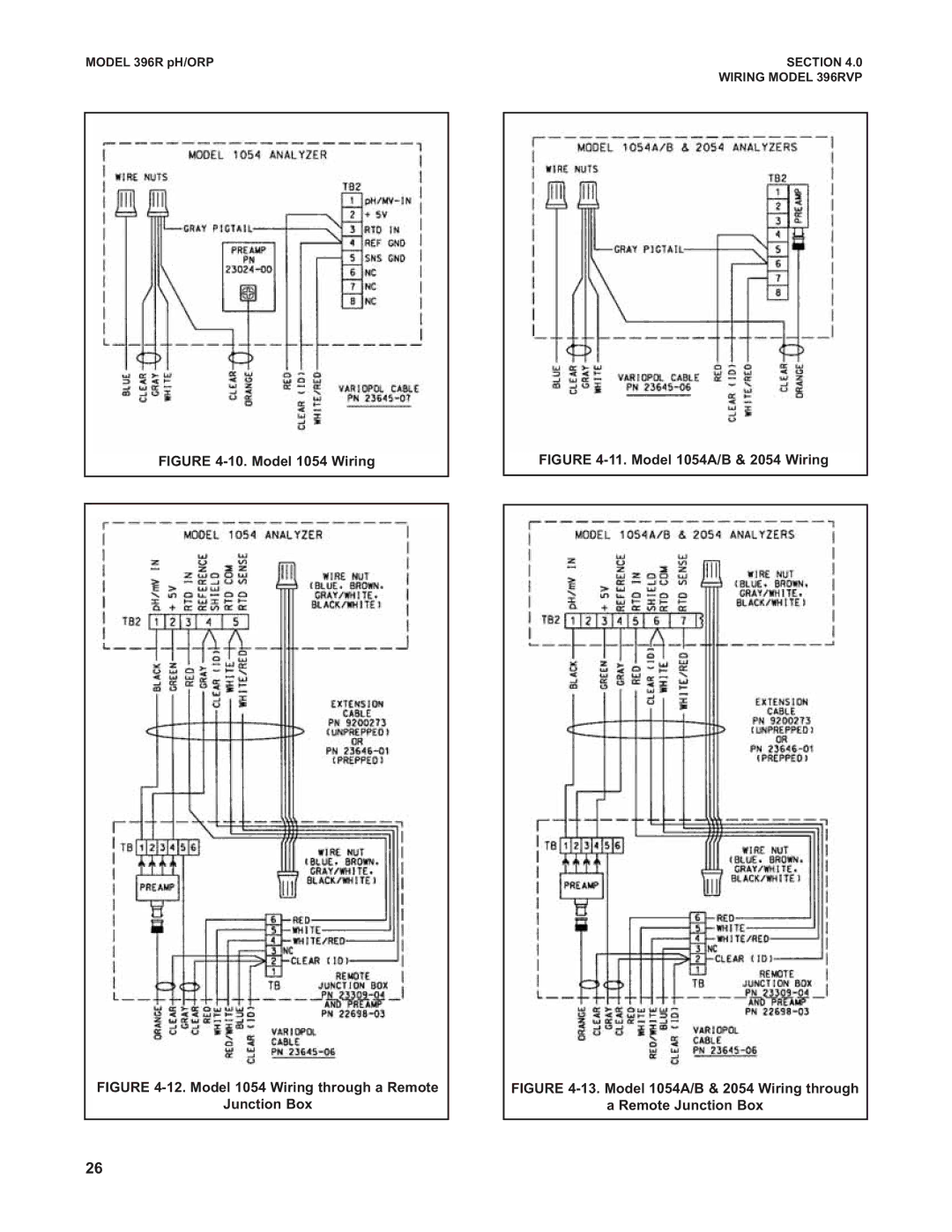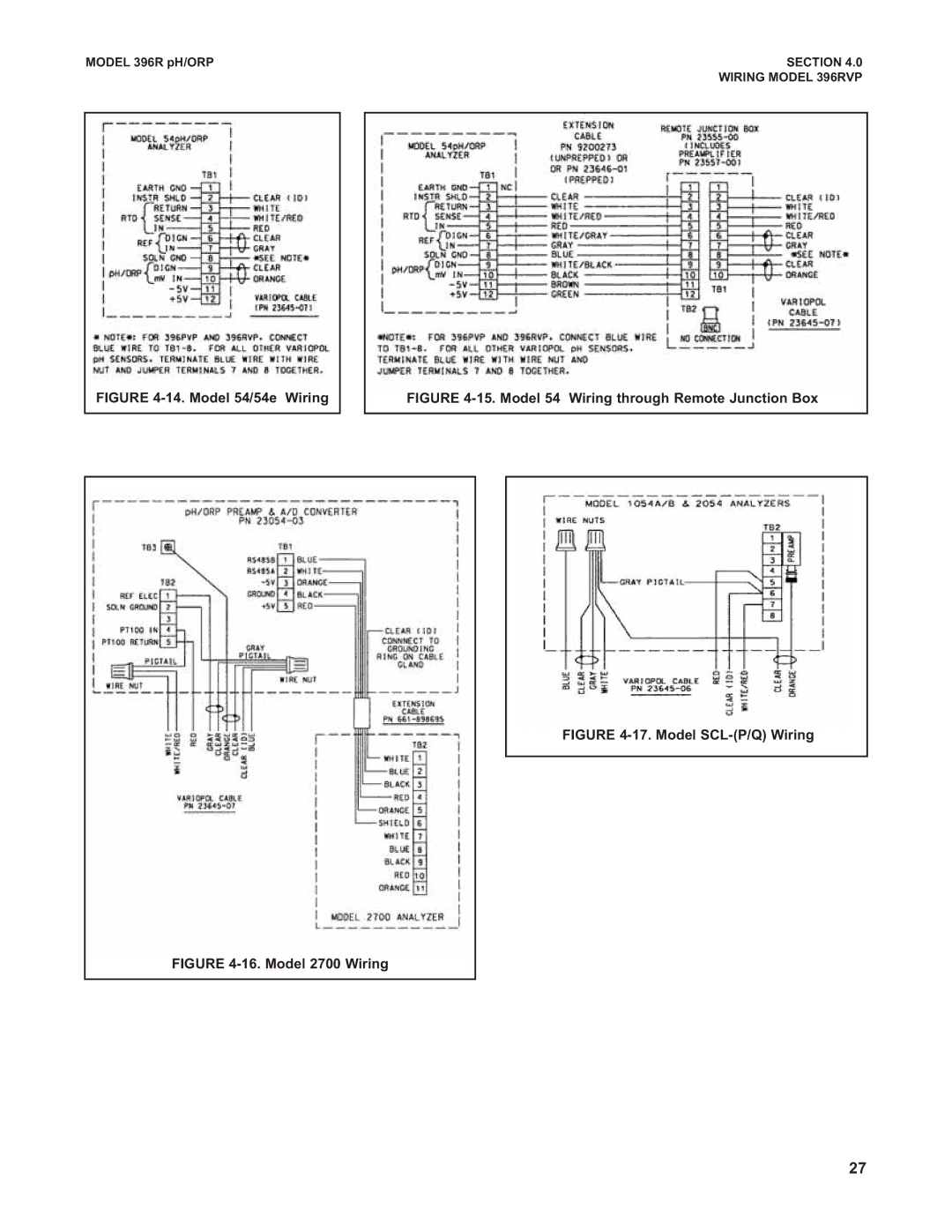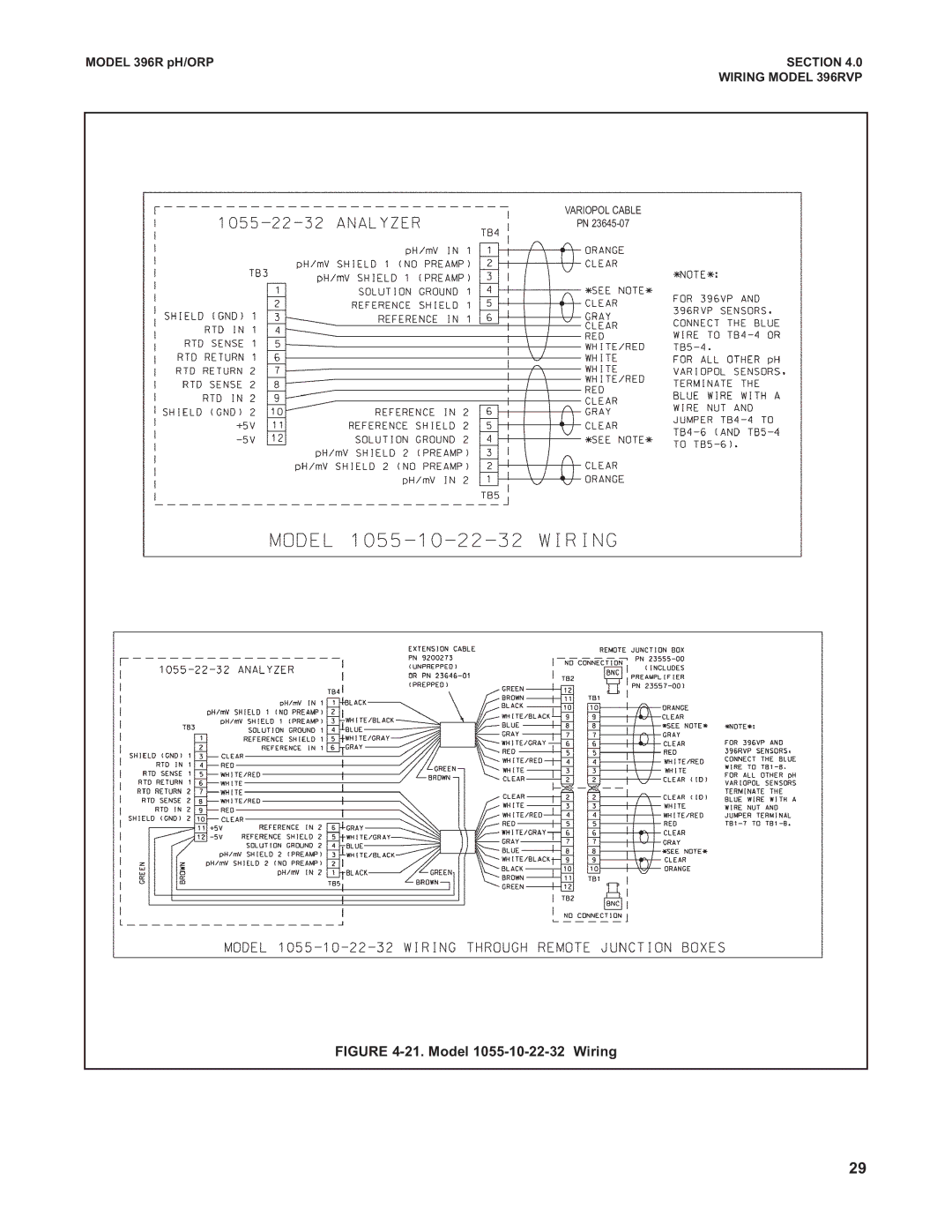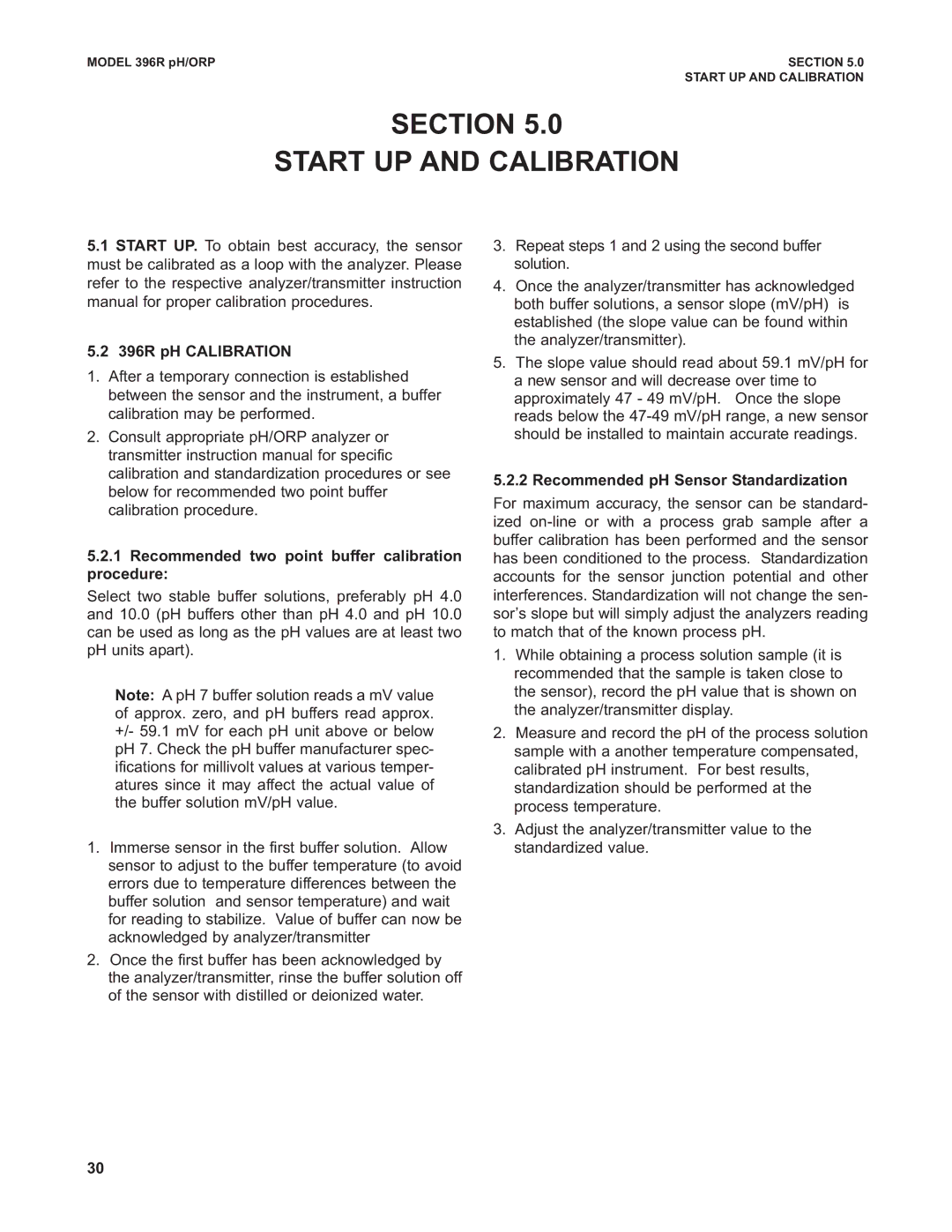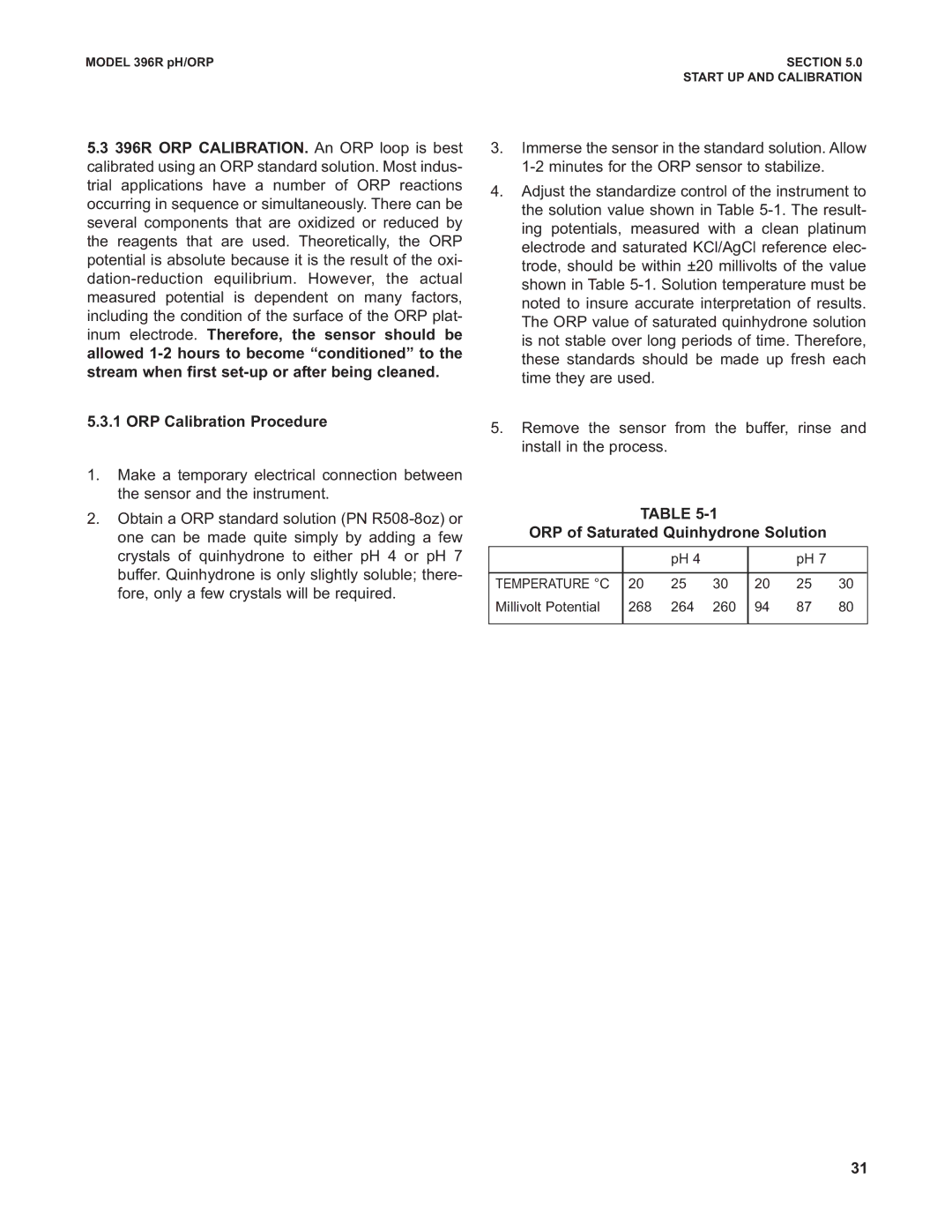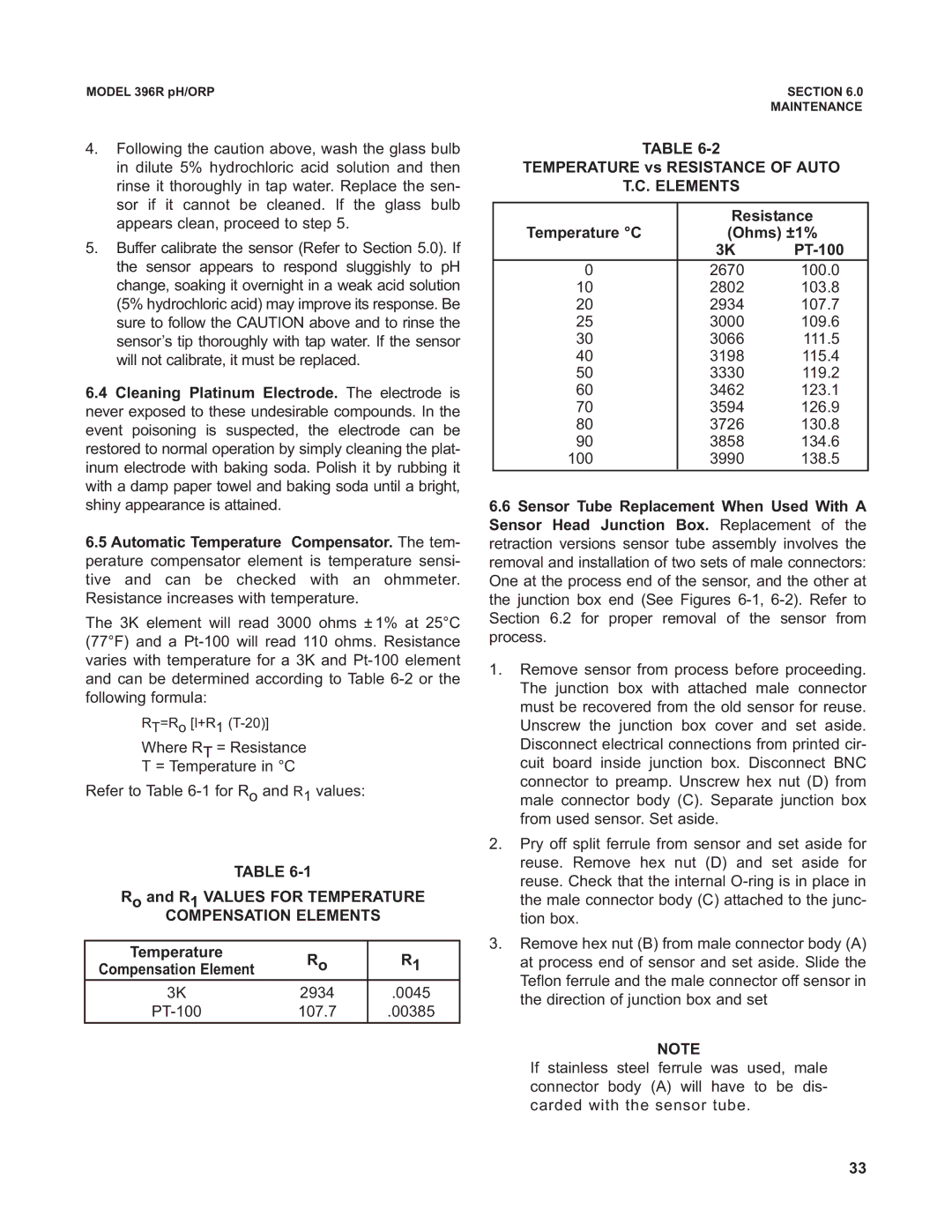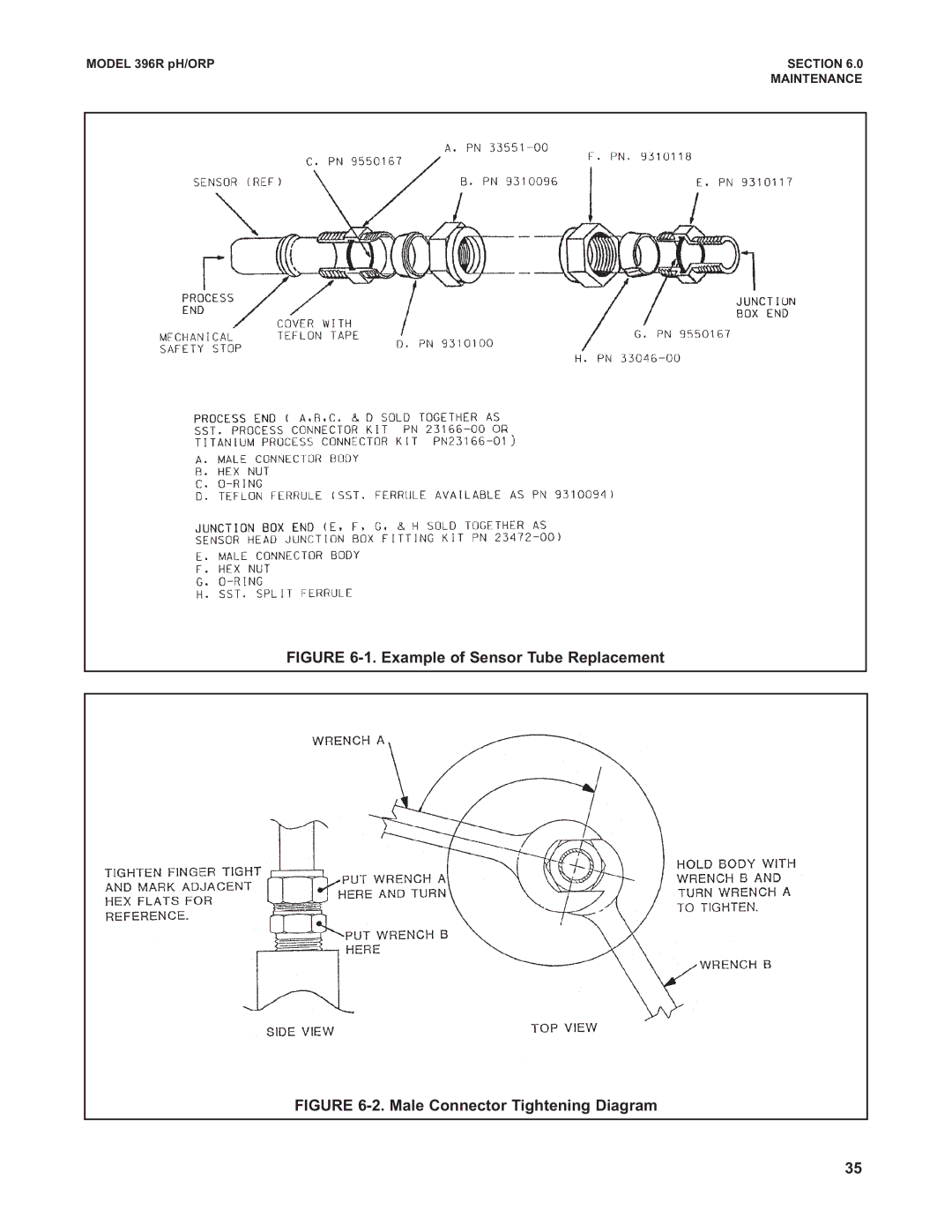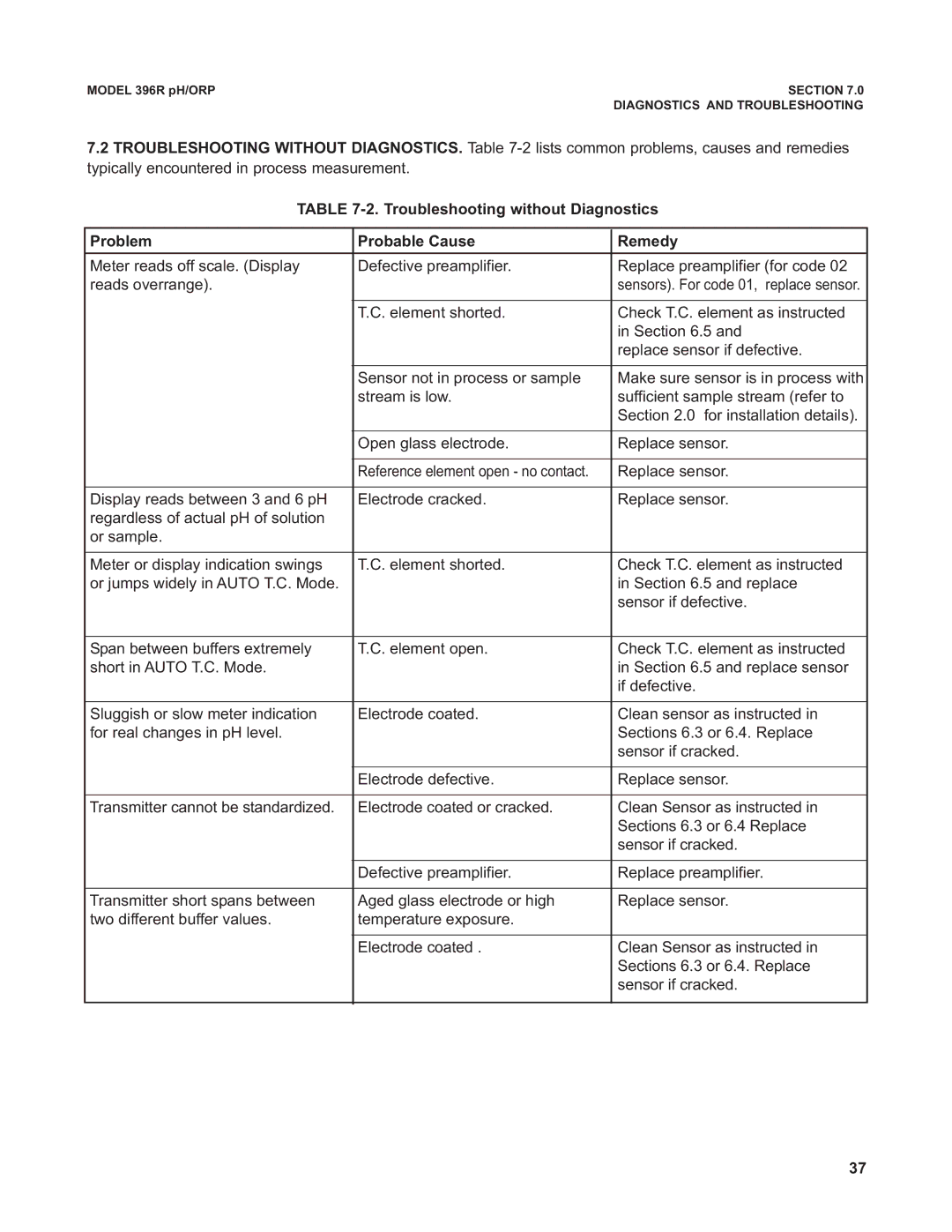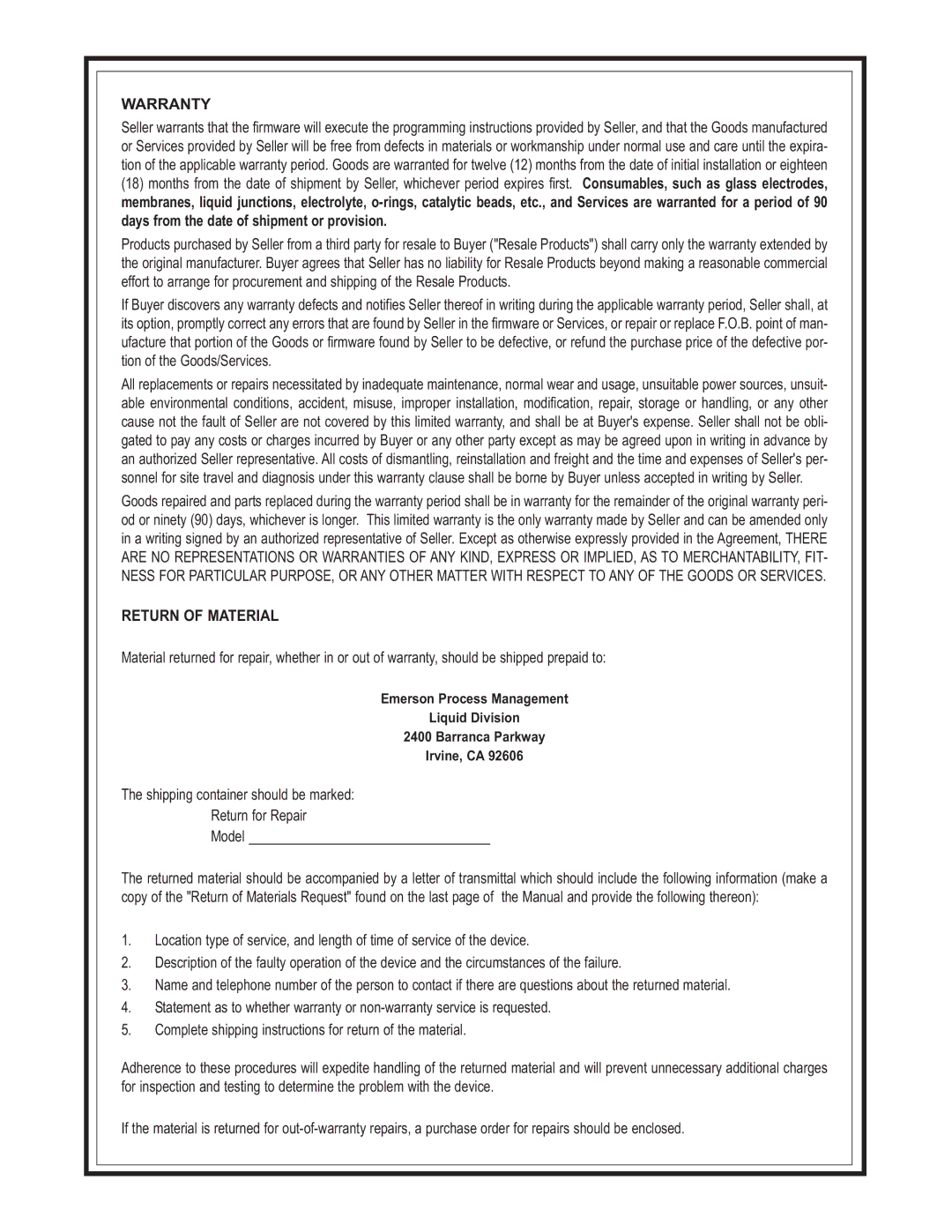MODEL 396R pH/ORP | SECTION 5.0 |
| START UP AND CALIBRATION |
SECTION 5.0
START UP AND CALIBRATION
5.1START UP. To obtain best accuracy, the sensor must be calibrated as a loop with the analyzer. Please refer to the respective analyzer/transmitter instruction manual for proper calibration procedures.
5.2396R pH CALIBRATION
1.After a temporary connection is established between the sensor and the instrument, a buffer calibration may be performed.
2.Consult appropriate pH/ORP analyzer or transmitter instruction manual for specific calibration and standardization procedures or see below for recommended two point buffer calibration procedure.
5.2.1Recommended two point buffer calibration procedure:
Select two stable buffer solutions, preferably pH 4.0 and 10.0 (pH buffers other than pH 4.0 and pH 10.0 can be used as long as the pH values are at least two pH units apart).
Note: A pH 7 buffer solution reads a mV value of approx. zero, and pH buffers read approx. +/- 59.1 mV for each pH unit above or below pH 7. Check the pH buffer manufacturer spec- ifications for millivolt values at various temper- atures since it may affect the actual value of the buffer solution mV/pH value.
1.Immerse sensor in the first buffer solution. Allow sensor to adjust to the buffer temperature (to avoid errors due to temperature differences between the buffer solution and sensor temperature) and wait for reading to stabilize. Value of buffer can now be acknowledged by analyzer/transmitter
2.Once the first buffer has been acknowledged by the analyzer/transmitter, rinse the buffer solution off of the sensor with distilled or deionized water.
3.Repeat steps 1 and 2 using the second buffer solution.
4.Once the analyzer/transmitter has acknowledged both buffer solutions, a sensor slope (mV/pH) is established (the slope value can be found within the analyzer/transmitter).
5.The slope value should read about 59.1 mV/pH for a new sensor and will decrease over time to approximately 47 - 49 mV/pH. Once the slope reads below the
5.2.2 Recommended pH Sensor Standardization
For maximum accuracy, the sensor can be standard- ized
1.While obtaining a process solution sample (it is recommended that the sample is taken close to the sensor), record the pH value that is shown on the analyzer/transmitter display.
2.Measure and record the pH of the process solution sample with a another temperature compensated, calibrated pH instrument. For best results, standardization should be performed at the process temperature.
3.Adjust the analyzer/transmitter value to the standardized value.
30
